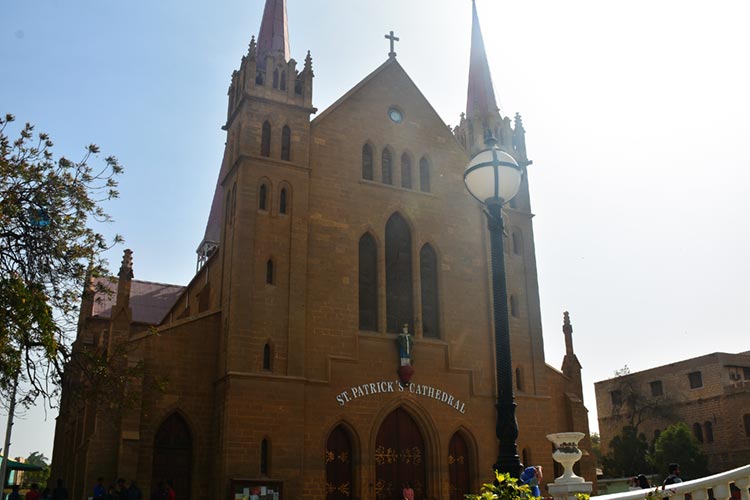
The cathedral can accommodate at least 1500 worshippers at one time, so it’s no wonder that one feels grand when walking from one end to the other.
By Musfirah Taqdees
Built in 1881 and standing tall at 52 meters, in one of the most congested areas of Karachi, is the architectural wonder of St. Patrick’s Cathedral. It is located in Shahrah-e-Iraq, Saddar Town, near Empress Market and is considered the largest cathedral in Karachi after St. Peter’s Cathedral, which was built in 2001 in Akhtar Colony.
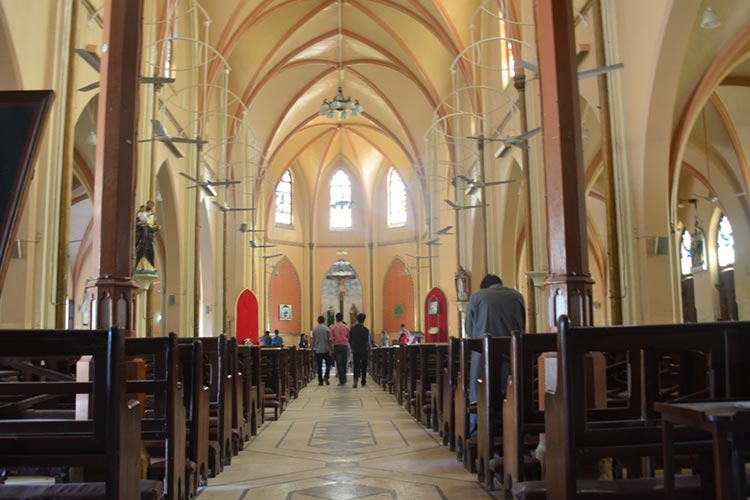 Before I even walk in through the gates, the first thing that demands my attention is the splendor of the Monument to Christ the King. This marbled white structure, which is 54 feet high, was built in 1931, and can take in around 150 people. I am told the area is off limits due to conservation reasons; it has already been restored once in 2013, to counter the effects of weather and time. At the center is the statue of St. Francis Xavier, a Christian missionary whose work has had considerable influence in the Indian Subcontinent, especially Goa.
Before I even walk in through the gates, the first thing that demands my attention is the splendor of the Monument to Christ the King. This marbled white structure, which is 54 feet high, was built in 1931, and can take in around 150 people. I am told the area is off limits due to conservation reasons; it has already been restored once in 2013, to counter the effects of weather and time. At the center is the statue of St. Francis Xavier, a Christian missionary whose work has had considerable influence in the Indian Subcontinent, especially Goa.
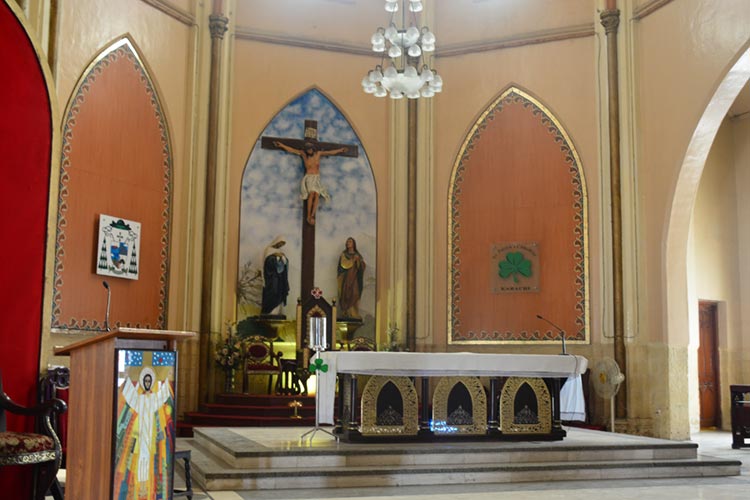 This is no coincidence. The Christian community that is settled in Karachi largely has its ancestral roots in Goa, India, formerly a Portuguese colony. Mainly belonging to the Catholic Church, they came from Goa to the port city during the British Raj. Since then, they have enriched the landscape of the city with such architectural gems as the Holy Trinity Cathedral, St. Andrews Church and the Goan Association Hall to name a few. They have a significant presence in the Saddar area of Karachi. Their contribution to the metropolitan’s planning and development resulted in Cincinnatus Town (now known as Garden East and Garden West), Seventh Day Adventist Hospital and St. Patrick’s High School.
This is no coincidence. The Christian community that is settled in Karachi largely has its ancestral roots in Goa, India, formerly a Portuguese colony. Mainly belonging to the Catholic Church, they came from Goa to the port city during the British Raj. Since then, they have enriched the landscape of the city with such architectural gems as the Holy Trinity Cathedral, St. Andrews Church and the Goan Association Hall to name a few. They have a significant presence in the Saddar area of Karachi. Their contribution to the metropolitan’s planning and development resulted in Cincinnatus Town (now known as Garden East and Garden West), Seventh Day Adventist Hospital and St. Patrick’s High School.
Moving on, I see the brown-bricked Cathedral itself, which was constructed in 1881. Since 1845, St. Patrick’s Church has been located on the same site where the Cathedral is now, but it got destroyed in a storm in 1885. St. Patrick’s Church may have been the first church to be built in Sindh, though there is some contestation on whether a church in Thatta might not have been older. The structure of the Cathedral, with its vertical emphasis and cross finials, built in the style of Gothic Revival Architecture, is astounding. As the Gazetteer of the Province of Sindh is quoted to have said, “Its exterior is not ornamental, though striking from a distance, but money and art have been lavished on the interior.”
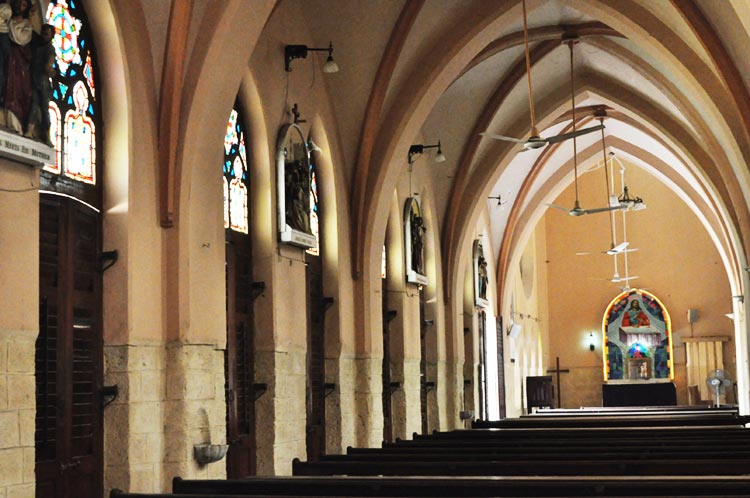 And indeed money and art have been lavished on it, for the interior is enhanced with spacious high ceilings, which are painted in oils. Adding to its beauty are the beautiful stained glass lancet windows. In 2003, under the Sindh Cultural Heritage Protection Act, the cathedral was declared as a protected monument, because of its magnificent architectural beauty.
And indeed money and art have been lavished on it, for the interior is enhanced with spacious high ceilings, which are painted in oils. Adding to its beauty are the beautiful stained glass lancet windows. In 2003, under the Sindh Cultural Heritage Protection Act, the cathedral was declared as a protected monument, because of its magnificent architectural beauty.
The cathedral can accommodate at least 1500 worshippers at one time, so it’s no wonder that one feels grand when walking from one end to the other. In the front, near the altar, there are copies of prayer books. I am sitting and skimming through one, when children begin entering and sitting in the front rows. Gradually the numbers increase, and in no time someone is taking attendance. I realize that the religious classes for children are about to start and get up to leave.
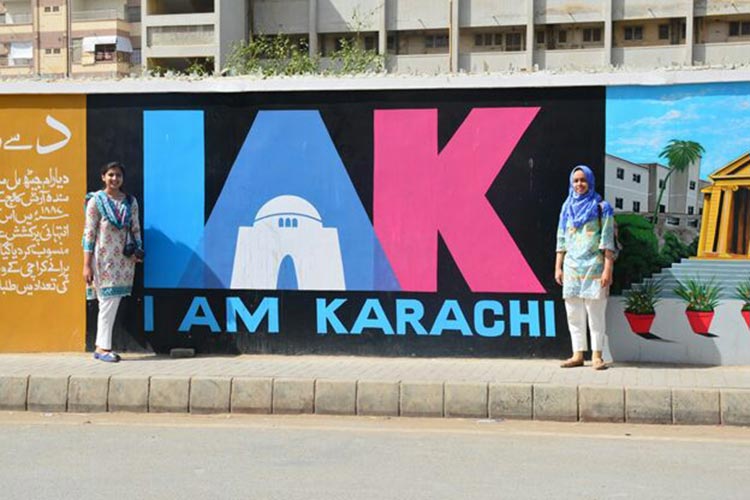
As I make my way outside the gates, I see something that I probably should have noticed when entering the area, had I not been so distracted. Right across the street, the boundary wall of an old abandoned building has been covered with the artwork of those who take pride in diversity. Monuments from all over Pakistan, and Urdu phonics that describes our country, have been composed together to form some of the paintings. But what catches my eye is the boldly written IAK – I AM KARACHI. Its location facing the St. Patrick’s Cathedral, has been wisely picked.
__________________
Courtesy: Youlin Magazine (Posted on November 29, 2017)
All images provided by Omama Batool.